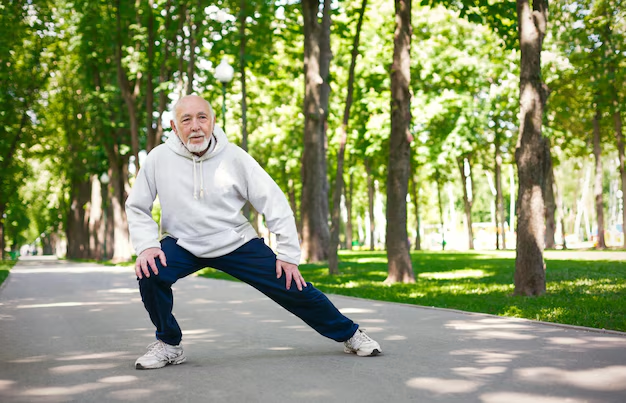Navigating Parkinson's Disease: Understanding Treatment Options and Care Strategies
Living with Parkinson's disease presents unique challenges, both physically and emotionally, for those diagnosed and their families. As a progressive neurological disorder, Parkinson's can impact daily life, underscoring the importance of a well-rounded understanding of available treatment options. Here, we explore various approaches to managing Parkinson's disease that can help maintain quality of life and provide practical insights into coping strategies.
Understanding Parkinson’s Disease
Parkinson’s disease is a chronic and progressive movement disorder, meaning symptoms worsen over time. It's marked by a gradual degeneration of neurons in a region of the brain called the substantia nigra, which leads to a decrease in dopamine production. Dopamine is a crucial neurotransmitter that helps control movement. As it declines, individuals experience symptoms such as tremors, stiffness, slowness of movement, and impaired balance.
Recognizing Symptoms Early
Early detection of Parkinson’s is vital. Common early signs may include:
- Tremors: Often starting in a hand or fingers.
- Slower Movements: Referred to as bradykinesia, it can make simple tasks difficult.
- Stiffness: Muscle rigidity can occur in any part of the body.
- Impaired Posture and Balance: Affected individuals may stoop or struggle with balance.
Being aware of these symptoms can lead to an earlier diagnosis and a more proactive management approach.
Exploring Treatment Strategies
Treatment for Parkinson's involves a combination of medication, lifestyle changes, and therapy aimed at managing symptoms.
Medications
Medications play a pivotal role in managing symptoms of Parkinson’s disease. While they cannot cure the disorder, they can help relieve symptoms. Here are some common types:
- Levodopa: Often considered the most effective Parkinson’s medication, it’s converted into dopamine in the brain.
- Dopamine Agonists: These mimic dopamine effects in the brain, although they are generally less effective than levodopa.
- MAO-B Inhibitors: These help prevent the breakdown of brain dopamine.
- COMT Inhibitors: They prolong the effect of levodopa therapy by blocking an enzyme that breaks down dopamine.
Surgical Options
For patients whose symptoms are not adequately controlled with medication, surgical interventions may be considered. The most common surgery is Deep Brain Stimulation (DBS). This involves implanting electrodes in specific parts of the brain. The electrodes produce electrical impulses that regulate abnormal impulses or affect certain cells and chemicals within the brain.
Lifestyle and Complementary Therapies
In addition to traditional treatments, many patients find lifestyle changes and complementary therapies beneficial.
Exercise and Physical Therapy
Regular physical activity can significantly improve the quality of life for those with Parkinson’s. Benefits include:
- Improved mobility and flexibility.
- Enhanced balance and posture.
- Boosted mood and overall well-being.
Types of beneficial exercises:
- Tai chi and yoga: Improve balance and flexibility.
- Walking and swimming: Enhance cardiovascular health and help with overall fitness.
- Strength training: Maintains muscle strength.
Occupational and Speech Therapy
- Occupational Therapy: Assists individuals in maintaining independence when performing daily tasks. Therapists can recommend assistive devices or adaptations to help with tasks such as eating or dressing.
- Speech Therapy: Helps with voice volume and articulation, augmenting communication abilities. It’s crucial for those whose Parkinson’s affects speech.
Diet and Nutrition
Following a well-balanced diet can help with overall health and managing Parkinson’s symptoms. Dietary tips include:
- High-fiber foods: Combat constipation.
- Hydration: Maintain adequate water intake to prevent dehydration.
- Balanced diet: Includes fruits, vegetables, whole grains, and lean proteins.
Psychological and Emotional Support
Living with Parkinson's disease isn't just a physical challenge—it can take a toll emotionally. Seeking psychological support is an essential component of comprehensive care.
Mental Health Care
- Cognitive Behavioral Therapy (CBT): Can be effective in managing anxiety and depression common in Parkinson’s patients.
- Support Groups: Offer a community of individuals who understand the journey, providing emotional support and practical advice.
Family and Caregiver Tips
Supporting someone with Parkinson’s requires patience and understanding. Here are ways caregivers can help:
- Educate Themselves: Understanding the disease equips caregivers to provide better support.
- Encourage Independence: Allow those with Parkinson’s to perform tasks independently as much as possible.
- Practice Self-care: Caregivers should prioritize their health to avoid burnout.
Research and Future Directions
Understanding and treatment of Parkinson's disease continue to evolve with ongoing research. Scientists are exploring:
- Genetic Studies: Aim to understand hereditary patterns and develop potential gene therapies.
- Stem Cell Therapy: Investigating whether new neurons can be grown and integrated into the brain.
- Neuroprotective Therapies: Focused on protecting the neurons that are still functioning.
Final Takeaways
Engaging with the various treatment options and lifestyle changes available can empower those living with Parkinson’s. While challenges remain, a combination of medication, surgical options, lifestyle adaptations, and support systems can vastly improve the overall quality of life.
Key Takeaways
- Identify Symptoms Early: Being aware of early signs allows for quicker diagnosis and treatment.
- Explore Medications and Surgeries: Levodopa remains a staple treatment, with DBS available for severe cases.
- Incorporate Lifestyle Modifications: Regular exercise, balanced diet, and therapies are crucial.
- Support is Essential: Both emotional and caregiver support are vital in managing the disease.
- Stay Informed: Keeping up with research developments can provide future opportunities for enhanced treatments.
By approaching Parkinson’s disease with a comprehensive strategy involving both medical and lifestyle interventions, those affected can navigate their journey with increased control and confidence. 💪✨

Related Articles
- Are There Environmental Causes Of Parkinsons
- Can Alcohol Cause Parkinson's
- Can Concussions Cause Parkinson's
- Can Females Get Parkinson Disease
- Can Head Trauma Cause Parkinson's
- Can Parkinson Disease Cause Dizziness
- Can Parkinson's Affect Eyesight
- Can Parkinson's Affect Memory
- Can Parkinson's Affect Speech
- Can Parkinson's Affect Vision